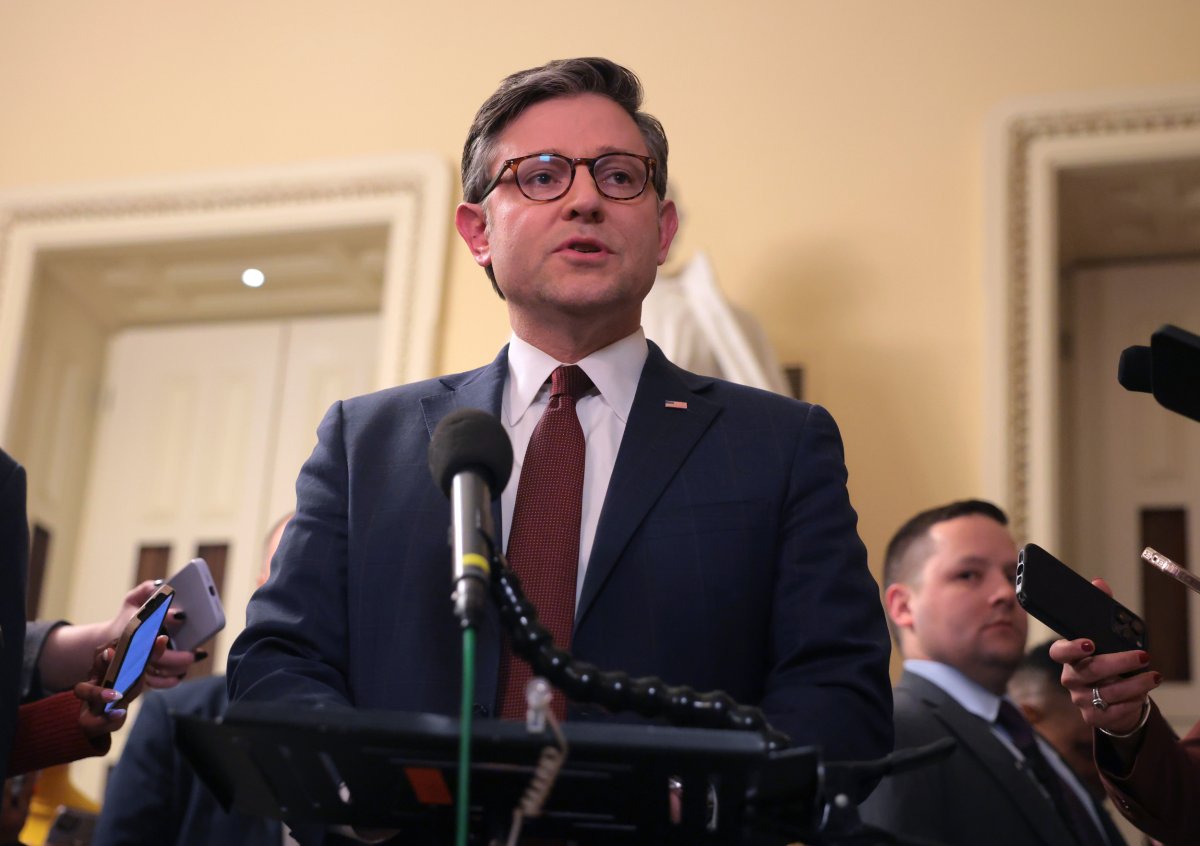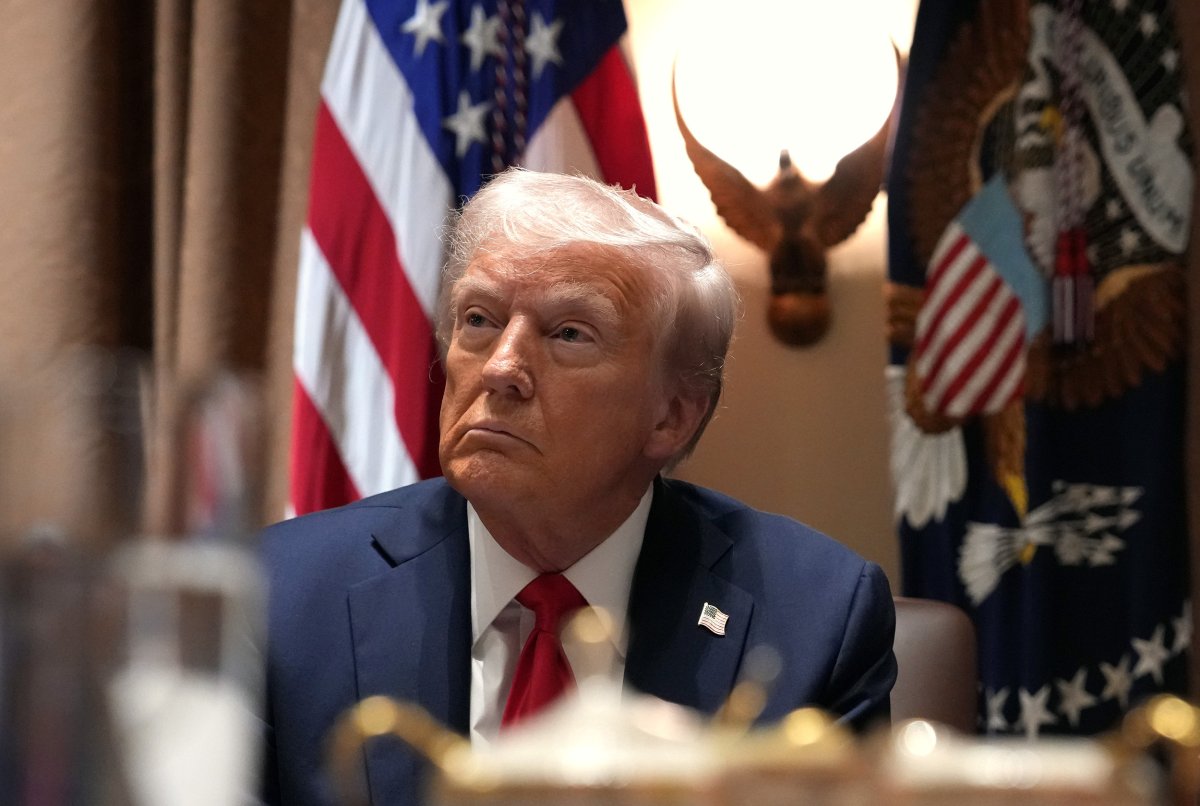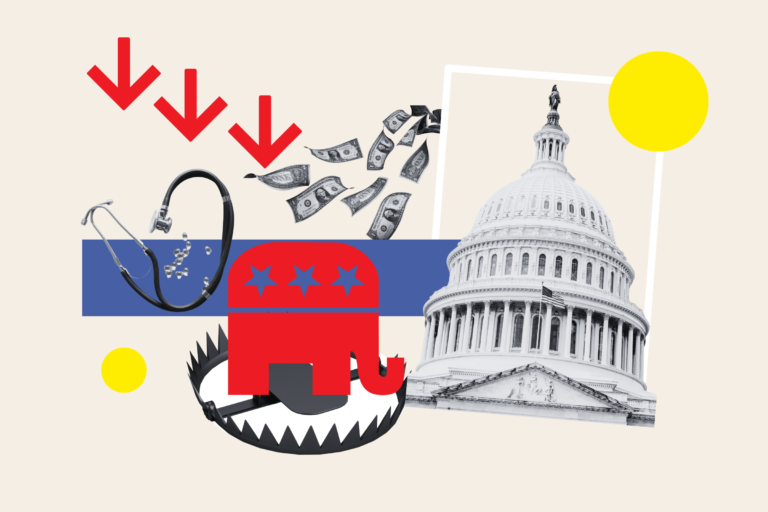The competing priorities of trimming the federal budget while freeing up funds to pay for further tax cuts mean Republicans may have to renege on some of their key America First pledges.
House Republicans’ budget resolution, narrowly adopted on Tuesday evening, urges aggressive pushes for fiscal discipline that all but force the party to take aim at programs such as Medicaid.
If the party wants to avoid the likely blowback from cuts to one of the country’s most widely subscribed to and popular programs, it may have to reel in its plans for extensive tax breaks, or finance its budget blueprint with further increases to the ballooning national deficit.
Either way, the ongoing reconciliation process puts Republicans in a challenging situation, forcing them to navigate internal ideological divisions while addressing the key question: “Where is the money coming from?”
What Is in the Latest Budget Resolution?
Key elements of Donald Trump’s agenda have been folded into the resolution, which passed in the House on Tuesday by a slim, 217-215 margin. This followed hours of last-minute negotiations between Republican party leadership and a handful of dissenting members.

Photo Illustration by Newsweek
The resolution includes around $4.5 trillion worth of tax cuts over the next decade, with a view to extending the 2017 cuts set to expire later this year. It anticipates that the resulting loss of government revenue will be offset by $2 trillion worth of spending reductions, alongside a $4 trillion hike to the nation’s debt ceiling.
The resolution also seeks to allocate hundreds of billions of dollars in additional spending on defense, border security and energy exploration.
While not explicitly referring to the health-care program, the budget called for the House Energy and Commerce Committee to identify at least $880 billion worth of cuts over the next decade from programs under its jurisdiction, which include Medicaid.
Republicans Are in a Bind
Medicaid is one of the most widely used programs in the country. Together with the associated Children’s Health Insurance Program (CHIP), it provides coverage to 79 million Americans, primarily serving older adults, individuals with disabilities and low-income individuals and families
According to a January poll of 1,300 adults by the Kaiser Family Foundation (KFF), a health policy research nonprofit, about three-quarters of the country (77 percent) hold favorable views of Medicaid, and 46 percent believe the government spends “not enough” on the critical program.
Republicans appear to be well aware of this fact, as shown by their insistence that budget cuts could come without impacting Medicaid.
“The word Medicaid is not even in this bill,” Representative Steve Scalise said ahead of the Tuesday vote. “This bill doesn’t even mention the word Medicaid a single time.”
When asked recently whether he could promise that there would be no cuts to Medicaid, Speaker of the House Mike Johnson indicated that tightening purse strings would be sufficient to free up the necessary funds for the other expenditures in the budget blueprint. Johnson highlighted the amount of “fraud, waste and abuse” in the program, adding that experts had identified “$50 billion a year in fraud alone in Medicaid.”
Echoing this message, Energy and Commerce Committee Chair Brett Guthrie told Politico: “Massive cuts in the program just aren’t going to happen.”
However, more would need to be identified (and removed) for Republicans to be able to fund the drastic decrease in government revenue proposed under their plan, meaning it is unlikely this could be carried out while leaving constituents reliant on the programs entirely unaffected.
“$880 billion is a lot of money, and even if only $600 billion is coming from health care, you have to go beyond tiny tinkering on the margins,” Marc Goldwein, senior policy director at the Committee for a Responsible Federal Budget, told the New York Times.
“Republicans in Congress may be hoping seniors are OK losing their health care, but that doesn’t seem likely,” Peter Loge, director of public affairs at George Washington University and a former senior adviser to Barack Obama, told Newsweek.
Steve Bannon, former chief strategist for the president, similarly warned Republicans that any changes to the widely popular program would come with severe political repercussions.
“A lot of MAGAs on Medicaid. I’m telling you, if you don’t think so, you are dead wrong,” Bannon said on a recent podcast. “Medicaid is going to be a complicated one. Just can’t take a meat axe to it, although I would love to.”
Potential threats to Medicaid, and the likely fallout that would result from taking aim at this and other critical safety net programs, had been key point of contention for the party holdouts prior to the Tuesday vote.
Trump’s “personal commitment to save health care” was among the reasons why Representative Victoria Spartz switched in favor of the resolution, while Representative Nicole Malliotakis of New York said she had come around to the plan after being convinced that the necessary savings could be achieved by rooting out fraud and waste.

Kayla Bartkowski/Getty Images
Other means have also been proposed for financing the tax cuts and new expenditures laid out in the resolution.
Some have suggested cuts to Medicare, though these would only compound the above issues. KFF found even more Americans hold a favorable view of this program than Medicaid (82 percent), and over half of the public (51 percent) believe the federal government does not spend enough on Medicare.
Others have pointed to the taxes states place on Medicaid providers, i.e., doctors and hospitals, in order to pay their share of expenditures, which are then matched by the federal government. A December report from the Congressional Research Service said that eliminating states’ ability to use Medicaid provider tax revenue could yield savings of up to $612 billion over the next 10 years.
Eliminating everything else that the House Energy and Commerce Committee oversees could also be an option, but research from the New York Times found that doing so would still leave Republicans $600 billion short of their proposed target.
“You can’t tell me that you’re going to provide $880 billion dollars less of health care, and that it won’t have a real effect on real human beings,” said Bobby Kogan, a former Senate and White House budget official and senior director for federal budget policy at the Center for American Progress Action Fund.
Kogan cited a similar case from 2017 when Republicans attempted to repeal the Affordable Care Act, which had facilitated Medicaid expansion in most states. Consequently, they lost control of the House the following year, which he views as evidence that this resolution—if adopted—could hold similarly severe consequences for Republican lawmakers.

Andrew Harnik/Getty Images
Cuts to Medicaid could put House Republicans at odds with Trump, who has expressed tacit support for leaving the health-care program unharmed. In a recent joint interview with Elon Musk, Trump vowed that Medicaid “won’t be touched” by the Department of Government Efficiency’s waste-eliminating efforts.
However, as Kogan told Newsweek, the president has been “cagey” about Medicaid throughout his political career, supporting the Obamacare repeal effort during his first term, which the Congressional Budget Office estimated at the time would result in $800 billion worth of federal cuts to the program over a decade. Kogan also pointed out that it was Trump’s last-minute intervention that secured the necessary number of votes for Tuesday’s resolution to succeed, and who had endorsed the House Republicans’ “one big beautiful bill” over calls from some Republican senators for a two-bill approach.
However, one Republican lawmaker told Politico that Trump is reliant on the proposed reductions in spending being amended when the resolution goes to the Senate for review.
“He absolutely is depending on [the resolution] to change in the Senate,” they said. “He does not want to cut Medicaid.”

Francis Chung/POLITICO via AP Images
In addition to it being unclear how Republicans will fund tax cuts, while locating $300 billion for defense and border security spending, it may be the case that the cuts themselves would fall short of fully supporting Trump’s fiscal agenda.
The $4.5 trillion outlined in the resolution would likely be insufficient for extending Trump’s 2017 tax cuts, which budget watchdogs estimate could take as much as $11 trillion from federal revenue over the next 10 years. This is aside from Trump’s pledge to eliminate taxes on tips, Social Security and overtime pay, which experts warn would result in trillions more in lost government inflows.
“The way Republicans will tell it, they’ll say, ‘we have a spending problem so we should cut spending, oh, and also we should cut just revenue,'” said Kogan, adding that the cuts will have to be paid via deficit finance, and a far greater increase in the debt ceiling than outlined in the resolution if they want to implement all aspects of the America First agenda.
But doing so puts Republicans in further trouble, given the party’s historical disdain for increases to the federal deficit, and the fact that trimming this down is in vogue.
“It’s truly unfathomable that when confronted with multi-trillion-dollar deficits and debt climbing towards record highs, lawmakers’ response is to pass a budget allowing themselves to add trillions more in debt over the next decade,” said Maya MacGuineas, president of the Committee for a Responsible Federal Budget. “There’s no excuse for that notion to even be entertained, let alone passed on the floor of the House.”
What Happens Next
“If Congress could balance the federal budget by cutting taxes, increasing spending on things people like and yelling at bureaucrats they would have done it by now,” Loge told Newsweek. “Like the rest of us, policymakers tend to put off hard decisions hoping that if they ignore them they’ll go away.”
There are many more steps before Tuesday’s resolution will become a reality. It must first be adopted by the Senate, where Republicans recently voted to adopted their own, competing plan.
The reconciliation process that the party is pursuing—which will allow them to avoid a filibuster and need only a simple majority in the Senate—requires that both chambers agree on an identical resolution.
Senate Republicans have already raised issues, with Lindsey Graham stating that the resolution will need a “major overhaul” to get passed in the Senate.
Republicans must therefore reconcile the differences in their fiscal blueprints—deciding on whether they can pay the political cost of taking aim at Medicaid and finance the tax cuts that are central to Trump’s agenda while avoiding a drastic rise in the federal deficit.
Do you have a story we should be covering? Do you have any questions about this article? Contact LiveNews@newsweek.com.


